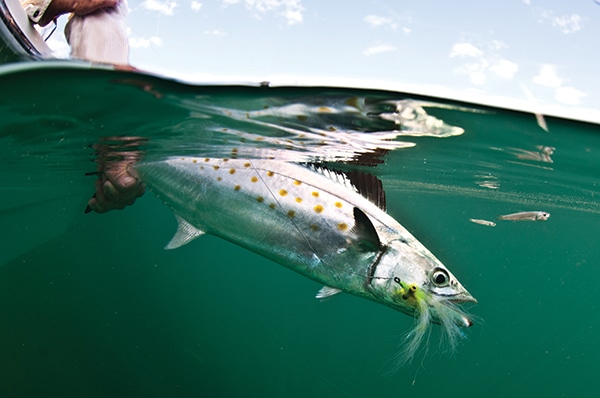
fly fishing clouser minnow
Though jigs don’t necessarily have the literal appearance of any particular type of game-fish forage, the movement they impart suggests food. Knowing exactly how deadly jigs are, saltwater fly-fishing pioneers began experimenting with traditional streamer flies and various methods of adding weight. One such pioneer was Bob Clouser. In his book, Clouser’s Flies, Clouser talks about pinching split shot near the eye of the hook on various styles of bucktail streamers he was using during the late ’70s. These were not among the most attractive flies in his box, but for what they lacked in aesthetics, they more than made up for in effectiveness.
In 1985, Clouser received an assortment of lead dumbbell-shaped eyes from Wapsi Fly Company, which he immediately began experimenting with on popular bass patterns. Two years later, Clouser started incorporating this innovative material in his favorite bucktail streamers; by 1988, his tweaking was complete, and the Clouser Deep Minnow was born.
Tying and Buying
Just like bucktail jigs, the beauty of the original Clouser Deep Minnow was its simplicity. With a handful of different-color bucktails, hook sizes and varying weights of dumbbell eyes, tiers can produce a wide range of Clousers that will work for myriad fly-fishing situations. While the Clouser is simple, there are a few things to look for, whether tying or buying them.
Bucktails are not created equal and therefore, when it comes to selecting tails, tiers should never grab and go. Always inspect the tails, and choose the ones that have the straightest and thinnest fibers possible. Bucktail is hollow, which makes it buoyant. Thin hair won’t compress and flair when it’s tied in, which is good since you want these hairs to lie flat. And because thin hair has a smaller hollow area inside, using these hairs will allow the fly to sink faster and more true. When selecting Clousers to buy, look for the same traits in the hair used in the flies as tiers look for in the tails.
You’ll also want to be mindful of where the dumbbell eyes are positioned on the shank. In general, the weight of a jig is distributed as close to the eye of the hook as possible, and because Clousers are essentially fly-fishing’s version of a jig, many Clousers have the dumbbell eyes secured too close to the eye of the hook. Clousers tied this way will certainly work, but in terms of balancing the fly properly, the dumbbell eyes should be cheated back closer to the bend of the hook. This subtle setback of the weight allows the fly to swim with the hook up; and if you are tying them, it leaves you a little more of the shank to work with when finishing off the fly with a tapered nose.
Variations
Bucktail is as much a staple to fly tiers as flour is to a baker, however, Clousers can be tied with countless other materials to meet specific needs. When natural fibers present size limitations, synthetic fibers are in order. They are much longer and equally as effective and, best of all, nearly all synthetic materials are far and away more durable than natural materials. Tiers can tweak a Clouser in more ways than different materials alone. The type of hook, and incorporating accessories, such as spinner blades or rattles, are all worthwhile Clouser experimentations.
Bob Clouser’s creation has spawned a countless number of popular patterns today. No matter which variation you prefer, you’d be selling yourself short if you didn’t carry at least a few Clousers with you in your box at all times.









